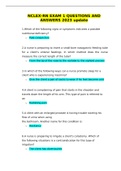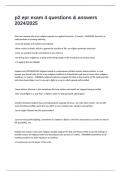Summary
Summary Research Skills In Life Science (WPLS18021)
- Course
- Institution
Summary of the first-year Biology course 'Research Skills in Life Sciences' at the University of Groningen. All 9 guest lectures are summarized using tables (with content of the powerpoint slides) and additional figures for support. No example questions added but some highlights (incorporated in th...
[Show more]












